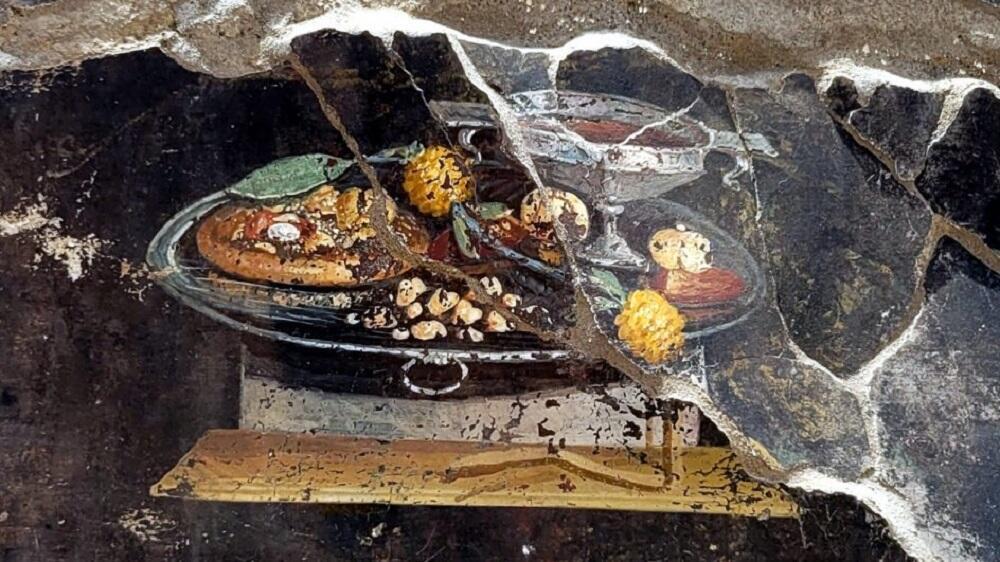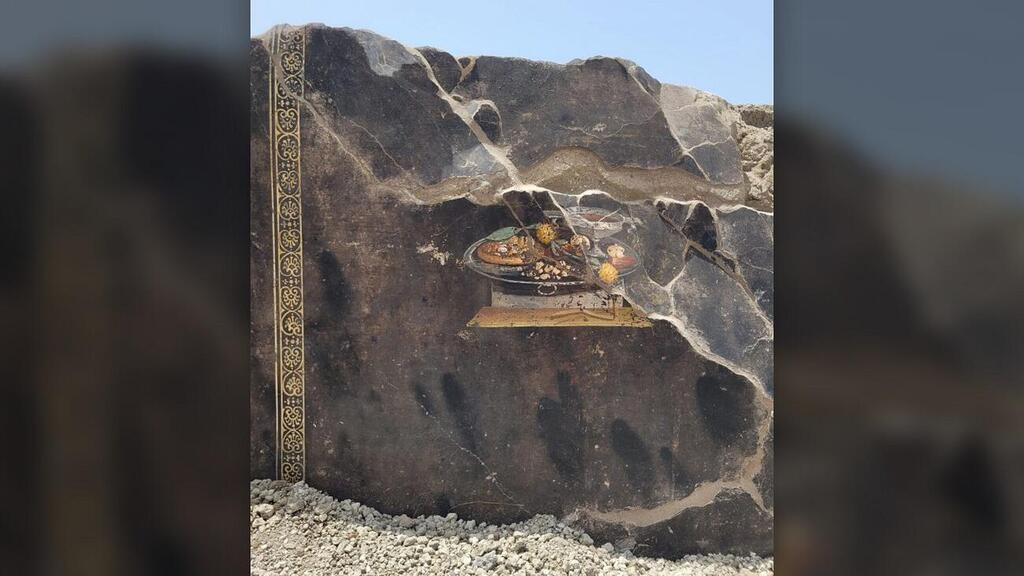Earlier this year, during excavations in the preserved ancient city of Pompeii, archaeologists made a remarkable discovery – a 2,000-year-old fresco depicting a spread of edible delicacies. The well-preserved still life showcases an array of items, including a circular flatbread that bears a striking resemblance to modern-day pizza.
The intricate artwork also features an ornate goblet of wine, fruits and other objects, all set against a captivating black background. The fresco provides a fascinating glimpse into the culinary delights enjoyed by the inhabitants of Pompeii before the catastrophic eruption of Mount Vesuvius in 79 C.E.
2 View gallery


What they ate in Pompeii before the volcano errupted
(Photo: Archaeological Park of Pompeii)
Upon closer inspection, it becomes evident that the bread depicted in the fresco is round and flat, bearing a striking resemblance to a pizza. However, based on today's definition of the term, it may not be categorically considered a pizza due to the assortment of toppings it is adorned with. It's a safe bet they didn't put pineapple on a pizza back then.
According to a statement from the Archaeological Park of Pompeii, the bread depicted in the fresco lacks two key ingredients commonly associated with modern-day pizza: tomatoes and mozzarella. This is because tomatoes were not introduced to Italy until the 1500s and were initially believed to be poisonous, while mozzarella did not become widely consumed in the country until the 19th century. Instead, the focaccia-like bread is adorned with pomegranate, a date-like fruit, spices and other condiments that are believed to resemble an early form of pesto.
According to Gino Sorbillo, owner of one of the oldest pizzerias in Naples, the absence of traditional toppings does not diminish the resemblance of the bread in the painting to pizza. Sorbillo suggests that in ancient Pompeii flatbreads made with grains, water, salt and possibly beer as a leavening agent were known. These breads could have been topped with vegetables or the catch of the day, forming an ancient precursor to pizza.
The archaeologists from the Archaeological Park of Pompeii have identified several food items in the fresco, including a flat focaccia bread placed next to the wine glass on a silver tray. Alongside the bread, there are other foods such as pomegranate, dates and spices. They have also suggested that a spread called Moretum in Latin, which typically consisted of cheeses and herbs, may be depicted in the painting. This spread was commonly consumed by the ancient Romans with bread.
"The wall paintings of this type, originating in the Hellenistic tradition, became even more widespread thanks to poets from the Roman imperial period, such as Virgil and Martialis, and the author Philostratus," said Gabriel Zuchtriegel, director general of the Archaeological Park of Pompeii. "When you think about the contrast between a humble and simple meal and the luxury of the silverware and the representative refinement of the wall painting, you can't help but think of pizza, which was first considered a poor food in southern Italy but now has conquered the world and is served even in restaurants with Michelin stars."


